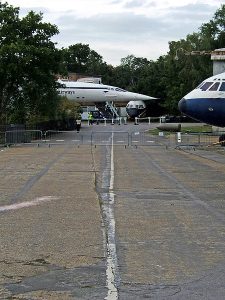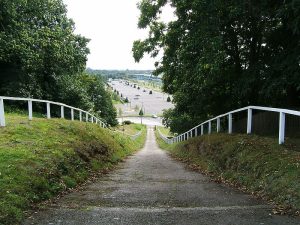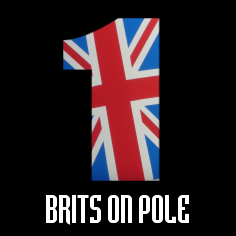It just goes to show that residents complaining about noise from racetracks is nothing new.

Eleven days after it opened for business in 1907, the Brooklands motor racing circuit staged the first-ever 24-hour race to take place on a closed course.
Selwyn Edge, an Australian businessman and racing driver, led three specially-converted Napier cars around a track that was lit overnight by more than 300 red railway lamps with flares being used to mark the upper boundary of the track.
And one of his leading drivers, Dorothy Levitt, was refused entry despite having been the first woman to compete in a motor race in 1903, and holding the Ladies’ World Land Speed Record. It would be several more years before women were allowed to compete.
Perhaps inevitably, the endurance race didn’t go down too well with householders in the plush Surrey suburb of Weybridge (although their views on lady racers remain unrecorded).

And thus one of British motorsport’s legendary events was born. To get round the objections the Junior Car Club (JCC) at Brooklands began to stage the Double Twelve from 1929 onwards.
Cars would do a 12-hour stint, from 8am to 8pm, and then be locked up overnight with a ban on any maintenance work. The next day they would do the same thing all over again.
Brooklands met its end as a racing venue with the outbreak of the Second World War. The site was turned over to aircraft production and the track was damaged by bombing or covered with temporary buildings.
Racing never returned to Brooklands even though the aerodrome went on to thrive over the coming decades.
The Double Twelve revived
However its motor racing heritage was preserved and the event was revived in 2008, the year after Brooklands’ centenary and the festival that accompanied it.

But now it had a new focus. Rather than an endurance event, which would no longer be practical at the inactive circuit, it was reinvented as a combination of trial and Concours D’Elegance.
Organisers say the current Double Twelve takes its inspiration from rallies organised by the JCC and the Royal Automobile Club in the late 1930s in which the elegance of the competing car was as important as the skill shown by the drivers in tricky manoeuvres.
This weekend the event returns to Brooklands for its third outing, offering thousands of visitors the opportunity to see vehicles from all decades of the last 100 years competing for trophies. It is set to feature more than a hundred classic and vintage cars taking part in driving tests as well as a concours event.
Highlights include a speed sprint for dozens of pre-war cars on the adjoining Mercedes-Benz World circuit today while on both days Classic car enthusiasts will be displaying their vehicles for visitors to admire. Tomorrow vehicles will be demonstrated on famous Brooklands Test Hill.
The event, which will be the biggest motoring competition held at Brooklands since 1939, is being organised by the Museum in association with the Vintage Sports Car Club.
The museum displays and aeroplanes will be open with rare sights including the 24-litre Napier-Railton, the fastest car ever to race around the Brooklands circuit, a Wellington bomber rescued from Loch Ness and Concorde G-BBDG.
The organisers add: “Its return will be well received by motor sport enthusiasts and will undoubtedly be a highlight of the British historic motor sports events calendar.”
For detailed information on events and admission, visit the museum website here.
Information from Wikipedia’s article on Brooklands has been used in the preparation of this article. To view its terms of use, click here.
